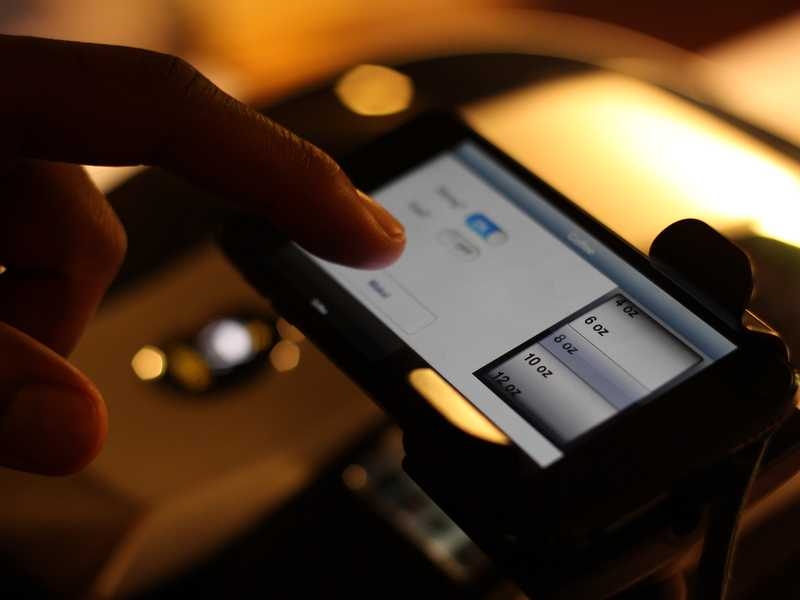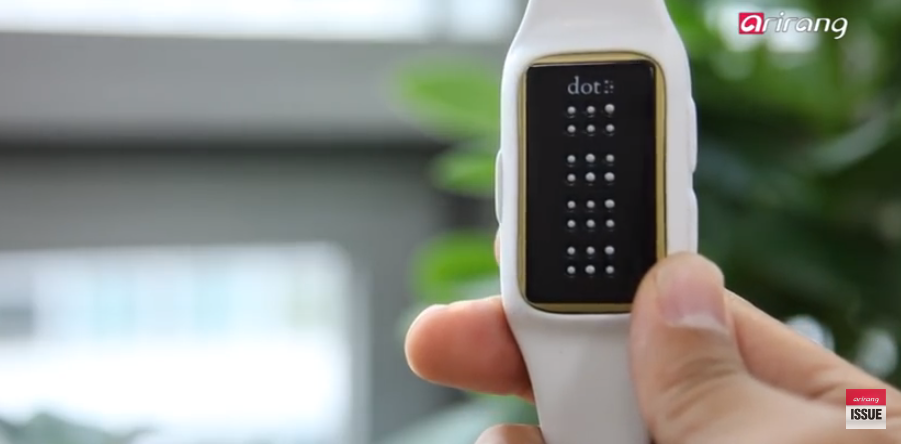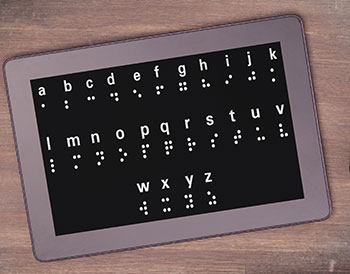Discover Cutting-edge Tools Designed for the Aesthetically Impaired
The development of innovative devices for the visually impaired represents a considerable development in accessibility and self-reliance. Technologies such as clever glasses with AI capabilities and mobile applications developed to give acoustic descriptions are improving everyday experiences for users. In addition, wearable gadgets that employ haptic feedback enhance environmental awareness, while modern-day Braille technologies offer brand-new methods to engage with text. As these tools continue to develop, their effect on the lives of those with visual impairments elevates crucial questions about the future of inclusivity and autonomy in different aspects of life. What lies in advance in this technological landscape?
Smart Glasses for Navigation

Smart glasses designed for navigating are revolutionizing the method aesthetically impaired individuals interact with their environment. These sophisticated gadgets use a mix of video camera modern technology, man-made intelligence, and acoustic comments to offer real-time info regarding surroundings. By using challenge detection systems, smart glasses can inform customers to potential dangers, making it possible for safer movement in both unknown and familiar settings.
The assimilation of GPS modern technology additionally enhances navigation abilities, enabling customers to receive auditory instructions as they move. This hands-free strategy not only fosters freedom yet also empowers visually damaged people to navigate city landscapes with boosted self-confidence. In addition, numerous wise glasses are outfitted with features that recognize spots and street indications, providing contextual details that boosts the individual experience.
Additionally, the development of these tools is continuously progressing, with firms functioning to enhance the precision of things recognition and increase the array of navigational features. As wise glasses become extra obtainable and economical, they hold the prospective to dramatically transform day-to-day live for visually damaged customers. Ultimately, these innovative devices represent a crucial step towards inclusivity, offering boosted wheelchair and a better feeling of freedom for individuals browsing the world around them.

Mobile Application for Daily Living
Just how can mobile applications boost the every day lives of aesthetically damaged people? Mobile apps are revolutionizing the way visually impaired customers navigate their settings, take care of everyday jobs, and accessibility info. These applications offer necessary support via various capabilities, cultivating independence and boosting quality of life.
Numerous cutting-edge mobile applications are made particularly for day-to-day living. Applications like Be My Eyes connect visually impaired individuals with sighted volunteers by means of video clip telephone calls, permitting them to obtain real-time help with tasks such as checking out labels or browsing strange areas. Likewise, Seeing AI, established by Microsoft, utilizes expert system to explain environments, read text, and identify things, properly changing a smart device right into a powerful device for daily assistance.
In addition, navigation apps tailored for the visually damaged, such as Aira and BlindSquare, supply audio-based instructions and ecological information, allowing individuals to traverse their surroundings securely and with confidence. Past navigation and instant assistance, mobile applications likewise support organization and job management, with attributes that aid users establish reminders, create to-do checklists, and track appointments. In recap, mobile applications act as crucial resources, equipping aesthetically impaired individuals to lead even more independent and fulfilling lives.
Wearable Technologies for Help
Empowerment through modern technology is progressively noticeable in the realm of wearable devices designed to help visually damaged individuals. These ingenious tools integrate perfectly into daily life, enhancing navigation and giving crucial responses to customers. For circumstances, smart glasses equipped with cameras can read and recognize faces message out loud, allowing users to communicate even more with confidence in social and professional setups.
An additional significant development is making use of haptic responses systems in wearable tools. These systems make use of resonances or other tactile signals to communicate details concerning the user's environment, such as barriers or adjustments in surface, boosting movement and safety. Wearable innovations also consist of wristbands that attach to mobile phones, alerting customers to notifications via refined vibrations, thus enhancing connectivity without reliance on aesthetic signs.
As these technologies remain to develop, they are not only enhancing freedom for visually impaired people but also fostering a greater feeling of inclusion in culture. By connecting the void between challenges faced in day-to-day living and the capacity for autonomy, wearable innovations work as critical devices in the mission for equal rights and empowerment for those with aesthetic problems.
Sound Summary Devices
Sound description tools play an important function in enhancing access for aesthetically impaired individuals, providing them with the ability to engage with visual media. Voice-activated assistive devices. These devices offer narrated summaries of vital visual components in films, tv programs, and live performances, making certain that individuals can completely understand the context and emotions conveyed through visuals
Audio description can be integrated right into different platforms, including streaming services, movie theater screenings, and live cinema. this page Lots of preferred streaming services currently consist of audio summary as an access attribute, allowing viewers to choose it conveniently. In addition to conventional media, specialized apps also exist, providing audio descriptions for art events, galleries, and various other social events.
The effectiveness of audio description depends upon the ability of the narrators, who have to communicate aesthetic information succinctly without detracting from the initial audio. Technologies in this field are additionally leading the way for even more tailored experiences, where individuals can change the level of information and pacing according to their choices.
Braille Innovations and Gadgets
Braille devices and developments have actually dramatically changed the method aesthetically impaired people interact with message and information. Modern advancements have led to the advancement of functional devices that boost literacy and self-reliance amongst users. Significantly, Braille show innovations have progressed, enabling for dynamic reading experiences. These devices transform digital text into Braille, making it possible for individuals to access a large variety of info on tablets, mobile phones, and computers.
Additionally, mobile Braille notetakers incorporate conventional Braille input with modern-day functionalities, facilitating note-taking, scheduling, and record editing on the go. Mobility aids for visually impaired users. These compact gadgets usually include text-to-speech abilities, bridging the space between Braille and auditory information
On top of that, cutting-edge Braille printers have arised, allowing customers to produce Braille tags, records, and instructional products efficiently. This ease of access fosters better engagement in educational and expert atmospheres, inevitably advertising inclusivity.
Moreover, research right into wise Braille innovations proceeds to increase. Instruments that incorporate expert system are being checked out to offer real-time navigation assistance and contextual details, improving the user experience in diverse setups. Overall, these innovations mirror a dedication to empowering aesthetically impaired individuals have a peek here with technology, guaranteeing they can conveniently access and involve with the world around them.

Verdict
The advancement of cutting-edge devices for the aesthetically damaged substantially enhances freedom and lifestyle. Smart glasses, mobile applications, wearable modern technologies, audio description devices, and Braille technologies jointly empower people by providing essential navigating support, ecological understanding, and enhanced analysis experiences. These modern technologies not only foster better inclusion but additionally advertise freedom in day-to-day tasks, inevitably adding to a much more obtainable and equitable culture for visually damaged individuals. Continued growth in this field holds promise for more enhancements.
As smart glasses come to be more accessible and affordable, they hold the prospective to dramatically change day-to-day life for aesthetically impaired customers. Mobile apps are transforming the way aesthetically damaged customers navigate their settings, handle everyday jobs, and access details. Apps like Be My Eyes connect aesthetically damaged users with sighted volunteers using video phone calls, permitting them to obtain real-time help with tasks such as reading labels or browsing strange rooms.In addition, navigation applications tailored for the aesthetically damaged, such as Aira and BlindSquare, provide audio-based instructions and environmental info, enabling individuals to traverse their surroundings securely and with confidence.The advancement of innovative tools for the aesthetically damaged dramatically enhances click this self-reliance and quality of life.